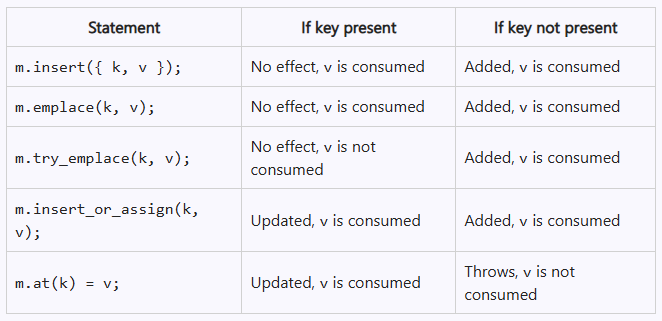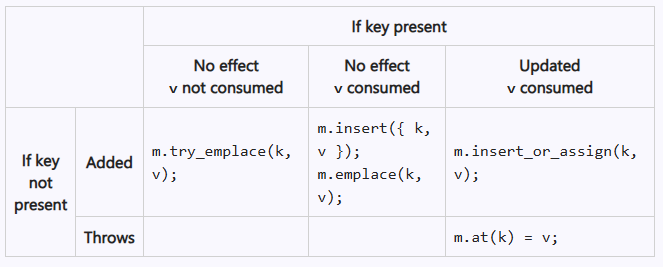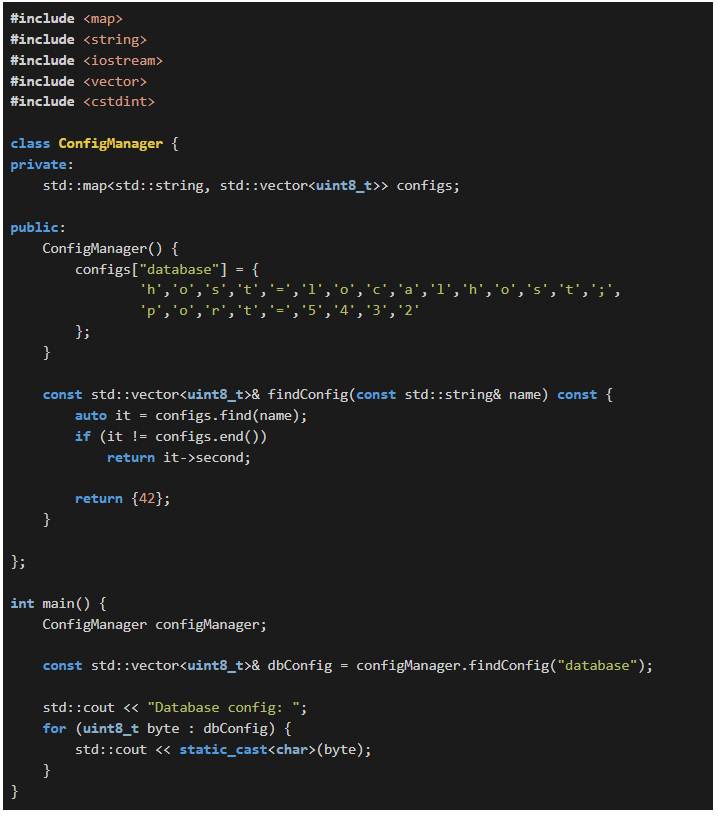A Simplified Overview of Ways to Add or Update Elements in a std::map -- Raymond Chen
 The
The std::map subscript operator ([]) is a convenient but sometimes dangerous feature, as it can create unintended default-constructed entries. By understanding the behavior of various map insertion and lookup methods—such as insert, emplace, try_emplace, and insert_or_assign—developers can write more efficient and predictable code while avoiding unnecessary key-value creations and duplicate lookups.
A Simplified Overview of Ways to Add or Update Elements in a std::map
by Raymond Chen
From the article:
Some time ago, I mentioned how the
std::subscript operator is a dangerous convenience. In that article, I linked to an overview of the insertion emplacement methods, but I’m going to recapture the essential points in a table.¹map In the table below, the discussion of “consumed” or “not consumed” refers to the case that
vis an rvalue reference likestd::.move(something) We can reorganize the table by effect.
Exercise: Why are the bottom left two boxes blank?



 C++26 introduces pack indexing as a core language feature, making it significantly easier to extract specific elements from parameter packs using a familiar subscript syntax. This improvement, proposed by Corentin Jabot and Pablo Halpern, eliminates the need for cumbersome workarounds like recursive templates or boolean expression tricks, providing a more intuitive and readable approach.
C++26 introduces pack indexing as a core language feature, making it significantly easier to extract specific elements from parameter packs using a familiar subscript syntax. This improvement, proposed by Corentin Jabot and Pablo Halpern, eliminates the need for cumbersome workarounds like recursive templates or boolean expression tricks, providing a more intuitive and readable approach.
 In this blog post, we’ll explore ways to improve the safety of a simple configuration manager. We’ll handle common pitfalls like dangling references and excessive stack usage. Additionally, we’ll see how C++26 helps enforce safer coding practices with stricter diagnostics and improved handling of large objects.
In this blog post, we’ll explore ways to improve the safety of a simple configuration manager. We’ll handle common pitfalls like dangling references and excessive stack usage. Additionally, we’ll see how C++26 helps enforce safer coding practices with stricter diagnostics and improved handling of large objects.
 Since its introduction, the
Since its introduction, the